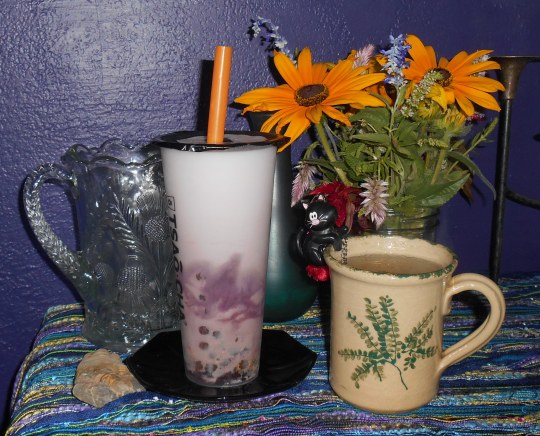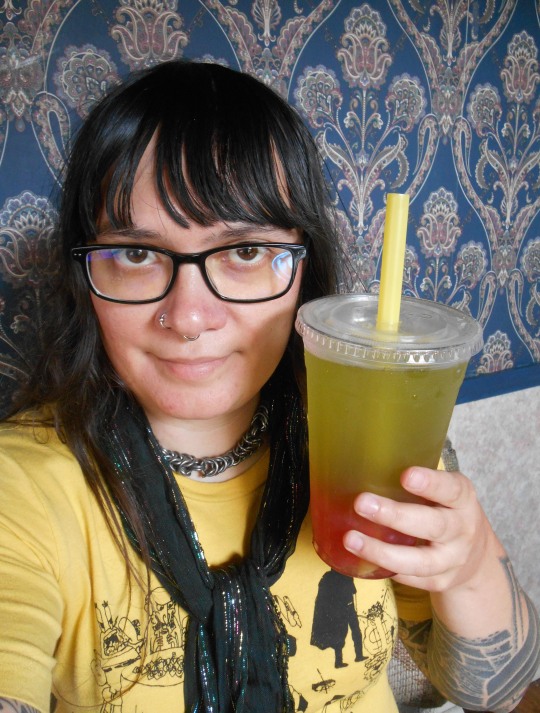#is it rutaceae or sapindaceae
Text
Ya girlthing back at it again with researching things
This time it's ancient Japanese swordsmithing and legendary blades and their names, desperately looking for any rules to sword names
Im also looking up trees species and genus because Miyamoto Usagi's swords are "Willow Branch" and "Young Willow" so what if his descendants end up with swords with names related to his swords names?
Idk if I want my Rise!Usagi to have Willow Branch, he has to have Edgewing but his second blade is being tricky
Since his sensei is Rise!Karasutengu I'm thinking of the legendary Kogarasumaru "Little Crow", maybe changing it from a tachi to a katana, tanto or wakizashi.
I also have my Leoichi kid Shuichi's swords to worry about... I originally thought to have them relate to lightning/thunder because of xir's mystic powers but then I thought that might be too...weeaboo?? Like too American localization 4kids thing.
On one hand most characters in Yojimbo never have their swords named/give their swords name so it shouldn't really matter what these guy's swords are called
But I'm also the person that looked through Wolf species with miniscule differences, 60+ rabbit species, Edo period fashion, native birds of Japan and kanji, so much fucking kanji
I should really look at Japanese grammar/spelling rules, but also I should really draw the line somewhere
Oh God the symbolism research
I reawakened the part of myself that grew up on discovery, animal planet and any other channel that was "educational" and centered mainly around animals as well as books on myths and folklore
This is so fun but SO stressful when I can't find the thing I wantttttt damelodamelo
Doesn't help that some of these articles are written...weirdly that I suspect AI and just have to suffer that shit
In summation:
How Do I Name These Fucking Swords!?
#ay speaka#<my talk tag#rise usagi#leoichi fankid#yuichi usagi#shuichi usagi#yes i know usagi is the given name in the comics and srtuc#in riseverse its the last name for Reasons#🅱️lease what is the closest relative of willow trees#is it rutaceae or sapindaceae
5 notes
·
View notes
Photo








I only exist as an internet phantom these days so I observed Botany 2022 by trying to "collect" as many plant families as possible in my bubble tea and other drink selection during the online conference.
Day 1: Fuku Tea blueberry black tea with lychee jellies and a blue butterfly pea lemonade. Families: Teaceae (tea family), Poaceae (grass family, sugar), Ericaceae (heath family, blueberry) Sapindaceae (soapberry family, lychee) Rutaceae (citrus family, lemon) Fabaceae (bean family, blue butterfly pea)
Day 2: Donkey Coffee vanilla chai latte. Families: Orchidaceae (orchid family, vanilla), Zingiberaceae (ginger family, ginger, cardamom), Apiaceae (carrot family, anise), Myrtaceae (myrtle family, clove), Lauraceae (bay family, cinnamon).
Tsaocha melon mojito with mango boba, pineapple passion green tea. Familes: Oleaceae (olive family, jasmine), Passifloraceae (passionflower), Bromeliaceae (bromeliad family, pineapple) Anacardiaceae (sumac/poison ivy family, mango) Cucurbitaceae (squash family, melon), Lamiaceae (mint family, mint).
Day 3: Tsaocha purple potato milk tea and Blue Monkey violet macaron black tea. Dioscoraceae (yam family, purple yam), Euphorbiaceae (euphorbia family, boba), Malvaceae (mallow family, hibiscus), Rosaceae (rose family, almond, apple), Violaceae (violet family, blue violets)
Fuku Tea kiwi green tea w strawberry popping boba. New families: Actinidiaceae (kiwi family, kiwi)
Day 4: Fuku tea dragonfruit lemonade, taro milk tea w coconut jelly, chocolate orange pu-erh, Blue Monkey black currant black tea, a random throat comfort tea from my closet. Families: Asteraceae (aster family, cornflower), Grossulariaceae (gooseberry family, currants), Ulmaceae (elm family, slippery elm), Scrophulariaceae (figwort family, mullein) Piperaceae (pepper family, black pepper)
Some families I had on the planning spreadsheet but didn't get to for lack of time include Lythraceae (pomegranate), Rhamnaceae (jujube), Vitaceae (grape), Pedaliceae (sesame)
12 notes
·
View notes
Text
Phyto-Chemical Screening and Ethno-Botanical Properties of Selected Plants of the Obafemi Awolowo University, Ile-Ife, Nigeria Abstract Aim: Reported cases of arthritis and typhoid fever have been on the increase in Nigeria, West Africa. This has led us into the ethno-botanical and phyto-chemical studies of some plants used in the treatment of these diseases in Nigerian traditional practice. Materials and Methods: Twenty plants were screened for the phytochemical compounds tannins, saponins, alkaloids, flavonoids and carotenoids using standard biochemical methods. The habits of the test plants were 90% trees, 50% herbs, 40% shrubs and 20% climbers. The plant parts used were 100% leaves. Results: All the tested plants contained high levels of varied concentrations of saponins, alkaloids and flavonoids compared to their levels of tannins and carotenoids. Conclusion: Further studies on these secondary metabolites should shed more light into the Nigerian trado-medical claim of these plant parts. This study will be of significance and value in therapeutics and drug development. Keywords: Plants; Phyto-chemicals; Ethnomedicines; Typhoid fever; Arthritis Go to Introduction Plants have been indispensable sources of both preventive and curative medical preparations in centuries [1,2]. According to the World Health Organization (WHO), estimates of up 80% of the world’s population, mostly in the developing countries have adapted trado-medicinal curative practices in health needs [3]. With a value in therapeutics, plant part preparations are used in China, France and Germany as herbal remedies with less stringent side effects as assumed in the medical world [2]. Plants have been recorded as containing phtochemicals which act as antioxidants, interfere with hormonal actions, stimulate body enzymes, interfere with DNA replication, inhibit bacterial function (bacteriocidal or bacteriostatic) [4]. In the present investigation, certain plants in Nigeria, West Africa used in trado-medical treatment of typhoid fever and arthritis were screened for phyto-chemical properties with a view to justifying their application in Nigerian traditional curatives and the possibility of the development of drugs of herbal sources for human health. Go to Materials and Methods Collection of plants Plants used in traditional practice for the treatment of arthri tis and typhoid fever: Morinda lucida, Cymbopogon citratues, Citrus aurantifolia, Citrus paradisi, Blighia Sapida were obtained along the Polytechnic Road, University of Ibadan, Ibadan, Nigeria. Spondias mombin, Azadirachta indica, Khaya grandfoliola, Momordica charantia and Alstonia boonei were gotten from the Department of Forest Resource Management, University of Ibadan, Nigeria. Musa paradisiaca, Phyllantus amarus, Carica papaya, Psidium guajava, Solenostemon monostachyus, Terminalia catappa, Ocimum gratissimum, Boerhavia diffusa, Parquetina nigrescens were collected within the premises of Mozambique Hall, Obafemi Awolowo University, Ile-Ife, Nigeria. Plant identification All plant samples were identified at the species level by Professor Bukola Adedeji at the Department of Botany, Obafemi Awolowo University, Ile-Ife, Nigeria. Preparation of plant materials The plant parts were washed thoroughly, cut into small parts and air-dried. They were then milled into coarse powder. The powdered samples were stored in glass containers at room temperature (28 °C). Phyto chemical screening The qualitative and quantitative screening of powdered plant samples were carried out at Kappa Biotechnology Laboratories (Research Support R & D Analytical Services), Trans Amusement Park, Old Airport Road, Bodija, Ibadan, Nigeria using standard methods [5-7]. Go to Results The profile of plants in this investigation revealed that the samples were from the families Euphorbiaceae, Laminaceae, Nictaginaceae, Asclepiadaceae, Caricaceae, Anacardiaceae, Rubiaceae, Maliaceae, Apocynaceae, Sapindaceae, Myrtaceae, Combretaceae, Rutaceae, Poaceae, Musaceae, Cucurbitaceae. The test plants were 90% trees, 50% shrubs, 40% herbs, 20% climbers having leaves as the only used plant part in the study (Table 1 & 2). Among the plants used for the treatment of arthritis and typhoid fever, Carica papaya appeared for both treatments. From the results of Table 3, there seems to be an order, very high amount of alkaloids and flavonoids, moderate amount of saponins but little amount of tannins and carotenoids in the tested plant extracts. The qualitative analysis was derived from the quantitative analysis and rated according to the highest and lowest figures present in the column Table 4. As observed in Table 5, the amount of saponins, alkaloids and flavonoids in the tested plant extracts were high contrary to their very low amounts of tannins and carotenoids. These tested plants used in the treatment of typhoid fever seem to contain relatively high amounts of saponins, alkaloids and flavonoids. Table 6 represents the qualitative phyto-chemical analyses of some plant extracts used in the treatment of typhoid fever in the African-Nigerian locality. Saponin is absent in Citrus sinensis as the only absence recorded in all the samples tested. Click here to view Large Table 1 Click here to view Large Table 2 Click here to view Large Table 3 Click here to view Large Table 4 Click here to view Large Table 5 Click here to view Large Table 6 Go to Discussion Plant screened contained phytochemical compounds in varied concentration. Most of the tested samples contained high amounts of saponin, alkaloids and flavonoids but moderate amounts of tannins and carotenoids. Researches have shown that over 90% of most isolated chemical constituents of plants are alkaloids [8]. Alstonia boonei have been used topically to reduce swellings and in treating rheumatic fever, muscular pain and hypertension [9]. In other findings, the anti-inflammatory properties of the alcohol extract of Alstonia boonei have been applied in herbal treatment of muscular pain and rheumatic fever [10]. Carica papaya occurrence in the two-treatment list for arthritis and typhoid diseases is suggestive of its versatility. Ming et al. [11] stated that pawpaw is an exceptionally promising system for the exploration of tropical- tree genomes and fruit-tree genomics. He reported further in the draft genome sequence of ‘SunUp’ papaya, as the first commercial virus-resistant transgenic fruit tree to be sequenced. In this investigation, carotenoids seem low in Azadiractha in dica. This finding tally with those described by Evans and Trease [12] and by Unnikannan et al. [13] who studied the effects of chromium on certain tree species. These secondary metabolites observed in A. indica could be responsible for its antimicrobial activities on S. aureus, E. coli and S. typhi characterizing the specific active constituent responsible for its therapeutic value. Alkaloids are known for their anti-inflammatory effects. Flavonoids which are naturally occurring phenolic compounds with anti-oxidative properties have earlier been described in Carica papaya and Parquetina nigrescens [14]. Phytochemicals exert antimicrobial activities through different mechanisms. For instance, tannins act by iron deprivation, hydrogen binding or specific interactions with vital proteins such as enzymes found in microbial cells [15,16]. Tannins have also been reported to induce anti-plasmodial activities [17,18]. Akinjogunla et al. [19] reported the efficacy of extracts of Ocimum gratissimum on Escherichia coli. Terminalia catappa had been earlier been observed to contain high amount of saponins in comparison with all other secondary metabolites. Saponins are major natural anti- oxidants with anti-carcinogenic properties. They have reducing power capabilities and are recognized as inhibitors of peroxidation [20]. Conclusively, the phytochemical compounds found in these plant samples may play significant roles in the treatment of arthritis and typhoid fever evidenced from existing literature and findings on these compounds. Their extraction and purification should be of value to drug development and therapeutics.
For more Open access journals please visit our site: Juniper Publishers
For more articles please click on Journal of Complementary Medicine & Alternative Healthcare

#Juniper Publishers#open acess publishers#open access journals#Complementary Medicine#alternative Healthcare
0 notes
Text
Documentation of Medicinal Plants from SV Govt. Degree & PG College Campus Palem, Mahabubnagar Dist. Telangana, India
ABSTRACT:
Objectives: Documentation of medicinal plants from the campus of SV Govt. Degree & PG College Palem.
Methods: Regular field trips were conducted, the information about the plants was recorded using standard questionnaire with the informers. The collected plant specimens were authentically identified with the help standard of floras.
Results: A total about 46 medicinal plants species were documented from the study area. Of 46 plants species belonging to 44 genera and 23 families were found useful. The largest families Anacardiaceae, Cucurbitaceae, Fabaceae were represented 05 species followed by Euphorbiaceae 04 species Asteraceae 3 species. Whereas 09 families i.e., Acanthaceae, Amarathaceae, Cactaceae, Lamiaceae, Mimosaceae, Moraceae, Rutaceae, Sapindaceae, Solanaceae represented by 2 of each species. While the 11 families represented single species.
Concussion: The present documentation will be useful to the campus students for further research and field works.
Further details @ http://www.imedpub.com/
For more details @ http://www.imedpub.com/articles/documentation-of-medicinal-plants-from-sv-govt-degree--pg-college-campus-palem-mahabubnagar-dist-telangana-india.pdf
0 notes
Text
HERBS AND LOCAL NAMES
Table 2:Taxononic information on medicinal plants Scientific name Local name(s) Family Habit (Akan name/s)
Abelmoschus esculentus (L.) Moench Nkruma Malvaceae Herb Adenia lobata (Jacq.) Engl. Nsurogya Passifloraceae Liana Adenia cissampeloides (Planch. ex Benth.) Harms Humakyεm Passifloraceae Herb Adenopus breviflorus Benth. Aboangateε Cucurbitaceae Liana Aframomum melegueta K. Schum. Sensam/Famwisa Zingiberaceae Herb Afrormosia laxiflora (Benth. ex Bak.) Harms Anyεn dua Papilionaceae Tree Albizia coriaria Welw. Ex Oliv. Awiafosamina Mimosaceae Tree Alchornea cordifolia (Schum. & Thonn.) Muell. Arg. (O)Gyama Euphorbiaceae Tree Allium cepa Linn. Anyaw Liliaceae Herb Allium sativum Linn. Garlic Liliaceae Herb Alstonia boonei De Wild. Nyamedua/Σmee/Sinuro Apocynaceae Tree Alternanthera pungens H. B. and K. Mpatowa-nsoe/Abereburo Amarathaceace Herb Amaranthus spinosus Linn. Asantewa Amarathaceace Herb Anacardium occidentale Linn. Atẽã Anacardiaceae Tree Aneilema beniniense (P. Beauv.) Kunth Onyamebewunamawu Commelinaceae Herb Anopyxis klaineana (Pierre) Engl. Kokoti Rhizophoraceae Tree Anthocleista nobilis G. Don Wudifokεtε/Hohoroho Loganiaceae Tree Arachis hypogaea L. Nkatea Papillionaceae Herb Aspilia africana (Pers.) C. D. Adams N/Mfofo Asteraceae Herb Baphia nitida Lodd. Odwen(e) Papilionaceae S/ST Final report (February 2010): Ethnobotany and ecology of Plants for reproductive health UNESCO (MAB) Young Scientists Research Award (2008), Gertrude L. A. Diame -GHANA 39 Table 2 continued Blighia unjugata Bak. Akye Sapindaceae Tree Bombax buonopozense P. Beauv. Okuo/Akonkodeε Bombacaceae Tree Bryophyllum pinnatum (Lam.) Oken Σgoro Crassulaceae Herb Butyrospermum parkii Kotschy Nkudua Sapotaceae Tree Carica papaya Linn. Borofere Caricaceae Tree Cassia alata Linn. Duawusu/Osempε Caesalpinaceae Shrub Ceiba pentandra (Linn.) Gaertn. Onyina Bombacaceae Tree Celtis adolphi-friderici Engl. Asable/Esakosua Ulmaceae Tree Cercestis afzelii Schoot Mmatatwene/Batatwene Araceae Herb Chromolaena odorata (L.) King & H.E. Robins. Acheampong Asteraceae Shrub Citrus aurantiifolia (Christm.) Swingle Ankama Rutaceae Tree Citrus medica var. limonum Brandis Amomoe Rutaceae Tree Cocos nucifera Linn. Kube Arecaceae Tree Cola gigantea A. Chev. Watapuo/Wawapuo Sterculiaceae Tree Cola maclaudi A. Chev. Wale Sterculiaceae Tree Cola nitida (Vent.) Schott. & Endl. Bese/Besekyem Sterculiaceae Tree Commelina diffusa Burm. f. Onyamebewunamawu Commelinaceae Herb Costus dubius (Afzel.)K. Schum. Nsummen Zingiberaceae Herb Cyathula prostrata (Linn.) Blume Akukuamba/Apupuaa Amaranthaceae Herb Cyperus esculentus Linn. Atadwe Cyperaceae Herb Daucus carota L. Subsp. sativus (Hoffm.) Arcang. Carrot Apiaceae Herb Desmodium adscendens (Sw.) DC. Ananse/Nkatenkate Papilionaceae Herb Dioclea reflexa Hook f. Atε/Nte(w)hama Papilionaceae Liana Diodia scadens Sw. Nsirisiri Rubiaceae Herb Discoglypremna caloneura (Pax) Prain Fetefre Euphorbiaceace Tree Elaeis guineensis Linn. Abε/Obεten Arecaceae Tree Elytraria marginata Vahl. Otiemasa Acanthaceae Herb Final report (February 2010): Ethnobotany and ecology of Plants for reproductive health UNESCO (MAB) Young Scientists Research Award (2008), Gertrude L. A. Diame -GHANA 40 Table 2 continued Emilia sonchifolia (Linn.) DC. Guakurow/Guakoro Asteraceae Herb Entandrophragma angolense (Welw.) C. DC. Edinam Meliaceae Tree Euphorbia hirta Linn. Animakoa/Ahenkodze Euphorbiaceace Herb Fagara xanthoxyloides Lam. Okãntõ/Kãnfu Rutaceae Shrub Ficus capensis Thunb. Doma Moraceae Tree Ficus exasperata Vahl Baule Nyankyerene Moraceae Tree Gossypium arboretum Linn. Asaawa/Asaaba Malvaceae Shrub Grewia mollis Juss. Homabiri/Kyapotoro Tiliaceae S/ST Guarea cedreta (A. Chev.) Pellgr. Kwabohoro Meliaceae Tree Hannoa klaineana Pierre & Engl. Hotoro-hotoro/Fotie Simaroubaceae Tree Heliotropium indicum Linn. Akokonyin-ne-dam/Akomfemtikoro Boraginaceae Herb Hoslundia opposita Vahl Aberewa-ani-kakyi Lamiaceae Shrub Jatropha curcas Linn. Adadze/Nkrangyedua Euphorbiaceae S/ST Justicia flava (Forsk.) Vahl. Ntumunum Acanthaceae Herb Khaya ivorensis A. Chev. Kumakrao Meliaceae Tree Kigelia africana (Lam.) Benth. Nufoten/Etua Bignoniaceae Tree Lannea welwitschii (Hiern) Engl. Kumenini/ Bopire Anacardiaceae Tree Mallotus oppositifolius (Geisel.) Muell. Arg. Sataduaa Euphorbiaceae Shrub Mangifera indica Linn. Mãngo Anacardiaceae Tree Manihot esculenta Crantz Bankye Euphorbiaceae Shrub Mareya micrantha (Benth.) Muell. Arg. Odubrafo Euphorbiaceae Tree Milicia excelsa (Welw.) C.C. Berg. Odum Moraceae Tree Momordica angustisepala Harms Ahensaw/Sapow Cucurbitaceae Liana Momordica balsamina Linn. Nyinya Cucurbitaceae Herb Momordica charantia Linn. Nyinya Cucurbitaceae Herb Monodora myristica Dunal Awiaraba/Efõobaa Annonaceae Tree Morinda lucida Benth. Konkroma Rubiaceae Tree Final report (February 2010): Ethnobotany and ecology of Plants for reproductive health UNESCO (MAB) Young Scientists Research Award (2008), Gertrude L. A. Diame -GHANA 41 Table 2 continued Musa paradisiaca L. Borεdze Musaceae Herb Musanga cecropioides R. Br. (O)Dwuma/Ote Moraceae Tree Myrianthus arboreus P. Beauv. Anyankumãã Moraceae Tree Napoleona vogelii Hook & Planc.h Burukuruwa/Obua Lecythidaceae ST/S Nauclea diderrichi (De Wild.) Merrill Bosema Rubiaceae Tree Nauclea latifolia Smith Ekumfodawase/Ekusia Rubiaceae Shrub Nicotiana tobacum Linn. Tawa/Towa Solanaceae Herb Ocimum canum Sims Eme/Akokobesa Lamiaceace Herb Ocimum viride Willd. Nunum Lamiaceace Shrub Omphalocarpum ahia A. Chev. Duapompo/Bereberetim Sapotaceae Tree Paullinia pinnata Linn. Toa-ntini Sapindaceae Liana Penianthus zenkeri (Engl.) Diels Kramankote Menispermaceae H/SS Pergularia daemia (Forsk.) Chiov. Nhomano Asclepiadaceae Herb Persea americana Mill Pee/Pae Lauraceae Tree Phyllanthus discoideus (Baill.) Muell. Arg. Pepεsea Euphorbiaceae Tree Phyllanthus fraternus Linn. Nkatseha/Awommaaguwakyi Euphorbiaceae Herb Phyllanthus muellerianus (O. Kze.) Exell Awobε Euphorbiaceae Liana Physalis angulata Linn. Tototo/Nsunsu Solanaceae Herb Picralima nitida (Stapf) Th. & Hél. Dur. (O)kanwen(e)/Owemba Apocynaceae Tree Piper guineense Schum. & Thonn. Surowisa/Sasima Piperaceae Herb Piper umbellatum Linn. Mumuaha Piperaceae Herb Piptadeniastrum africana Hook. f. Dahoma/Danwoma Mimosaceace Tree Pleiocarpa mutica Benth. (O)kanwen(e)/Kakana Apocynaceae Tree Plumbago zeylanica Linn. Ohyewgya Plumbaginaceae Liana Portulaca quadrifila Linn. Asaaseneabo Portulacaceae Herb Psidium guajava Linn. Oguawa/Eguaba Myrtaceae Tree Pycnanthus angolensis (Welw.) Exell Otie/Etsiw Meristicaceae Tree Final report (February 2010): Ethnobotany and ecology of Plants for reproductive health UNESCO (MAB) Young Scientists Research Award (2008), Gertrude L. A. Diame -GHANA 42 Table 2 continued Rauwolfia vomitoria Afz. Anaεneaa/Kakapenpen Apocynaceae Tree Ricinodendron heudelotii (Baill.) Pierre ex Pax Wamma/Enwany Euphorbiaceae Tree Sansevieria liberica Ger & Labr. Twiton Agavaceae Herb Schwenckia americana Linn. Esonoahaban Solanaceae Herb Scytopetalum tieghemii (A. Chev.) Hiutch. & Dalz. Sumiẽ Scytopetalaceae Tree Sida acuta Burm. f. Mofransan/Obraneatuata Malvaceae Herb Solanum torvum Swartz Samanntroba/Kwahunsusuwa Solanaceae Shrub Spathodea campanulata P. Beauv. Osisirew/Nufu Nsu Bignoniaceae Tree Sphenocentrum jollyanum Pierre Okramamkote/Krakoo Menispermaceae W.H. Spondias monbinLinn. Atõaa Anacardiaceae Tree Stereospermum kunthianum Cham. Esonoetokwakofoo Bignoniaceae Tree Strophanthus gratus (Hook.) Franch. Omããtwa Apocyanaceae Liana Struchium sparganophora (Linn) O.Ktze. Suibirnyin Asteraceae Herb Synedrella nodiflora Gaertn. Mamponfoapow/Tutummirika-kohwe-Σpo Asteraceae Herb Tabernaemontana africanus T. Anderson ex S. Moore Obonawa Apocynaceae Tree Terminalia ivorensis A. Chev. Emire Combretaceae Tree Thespesia populnea (Linn.) Soland ex Corr. Frefi Malvaceae Tree Tieghemella heckelii Pierre ex A.Chev. Abako Sapotaceae Tree Trianthema portulacastrum Linn. Adwera Aizoaceae Herb Trichilia monaldelpha (Thonn.) J. P.De Willde Tanuro Meliaceae Tree Turraea heterophylla Smith. Ahunanyankwa Meliaceae Shrub Vernonia amygdalina Del. Bowen(e) Asteraceae S/ST Vitex grandifolia Gürke Awama/Disinkro Verbenaceae S/ST Xanthosoma mafaffa Schott Amankani Araceae Herb Xylopia aethiopica (Dunal) A. Rich. Hwenetia Annonaceae Tree Zea mays Linn. Eburow Poaceae Herb
0 notes